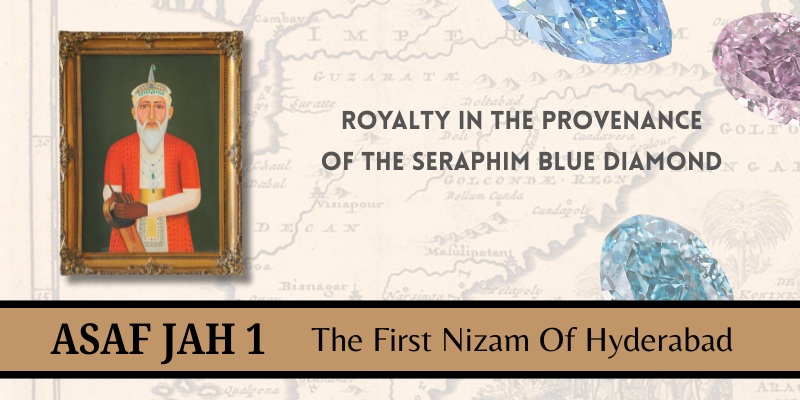The provenance of a diamond serves as its historical passport. The earlier the trail of ownership and documentation dates back, the more culturally and historically significant the diamond. This is something that puts the Seraphim Blue Diamond, in an advantageous position.
When the provenance of a diamond includes links to notable eras, noble families, or even ancient civilizations, the diamond transcends its material value and becomes a tangible symbol of time, power, and prestige.
Believed to be part of a opulent turban ornament worn by the Asaf Jah 1, the first Nizam of Hyderabad – the Seraphim Blue Diamond, has an enviable history. We are talking about a time frame of around 1724, that is when the reign of the first Nizam began.
The Nizam dynasty of Hyderabad which ruled from 1725 to 1948, was among the wealthiest ruling families in history. At their peak, the Nizams possessed immense riches — not just in land and influence, but in extraordinary jewels, including some of the most spectacular diamonds and emeralds known to mankind. Their treasuries were legendary, filled with precious gems, pearls, and artifacts of exquisite craftsmanship. The Seraphim Blue Diamond happened to be one of these treasures.
This deep-rooted history enhances the value of this blue diamond, not only in the eyes of collectors and historians but also in the art and auction world, where such precious stones are seen as heirlooms of humanity’s cultural legacy.
The Seraphim Blue Diamond, with its reported royal lineage, embodies not just exceptional beauty but also a narrative steeped in prestige, power, and legacy.
Such provenance adds a dimension of mystique and cultural importance — collectors and connoisseurs aren’t just acquiring a gem, they’re inheriting a fragment of history. It’s no longer just about the 4 Cs (cut, color, clarity, carat); the story becomes the fifth “C” — culture.







